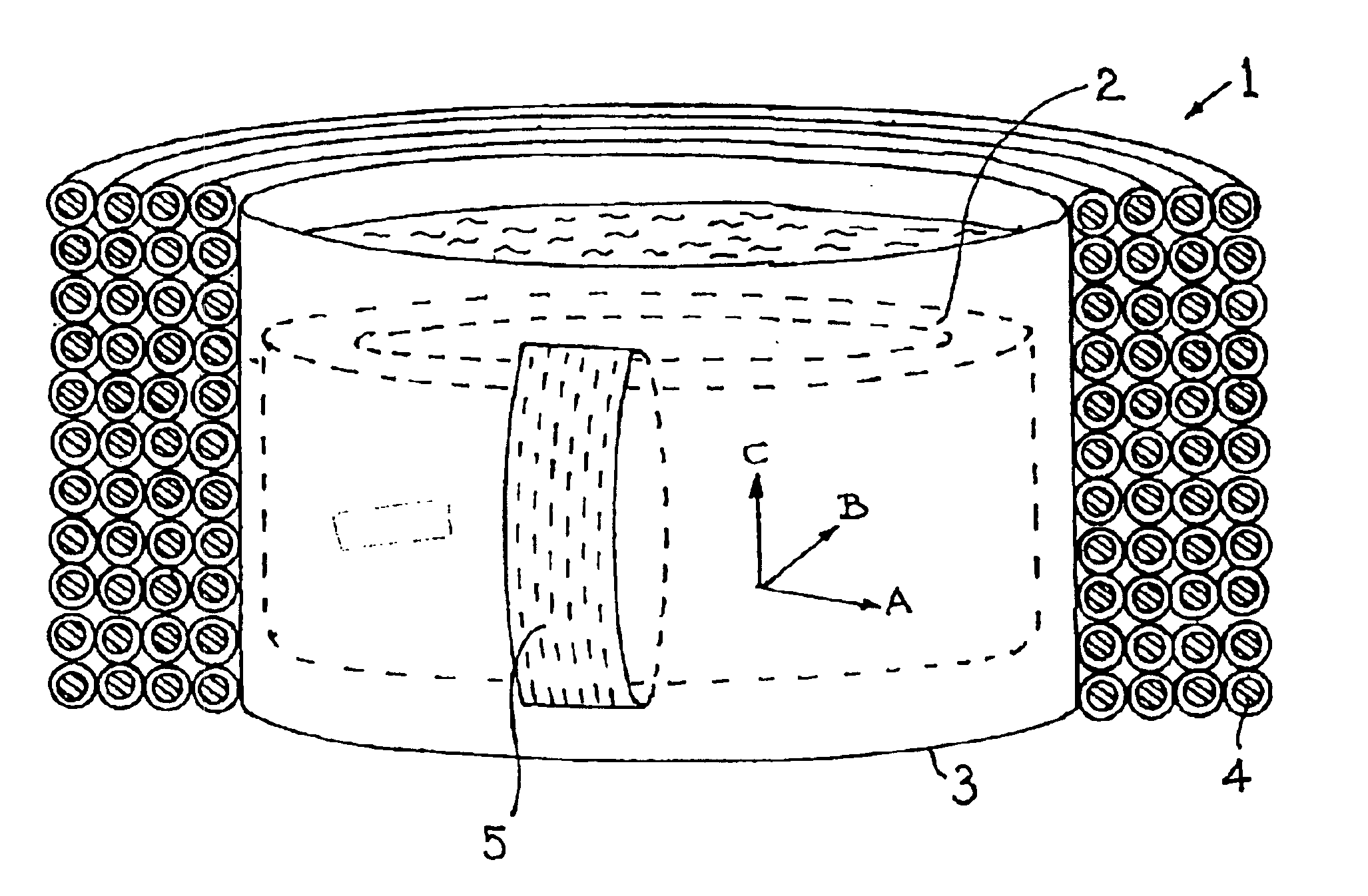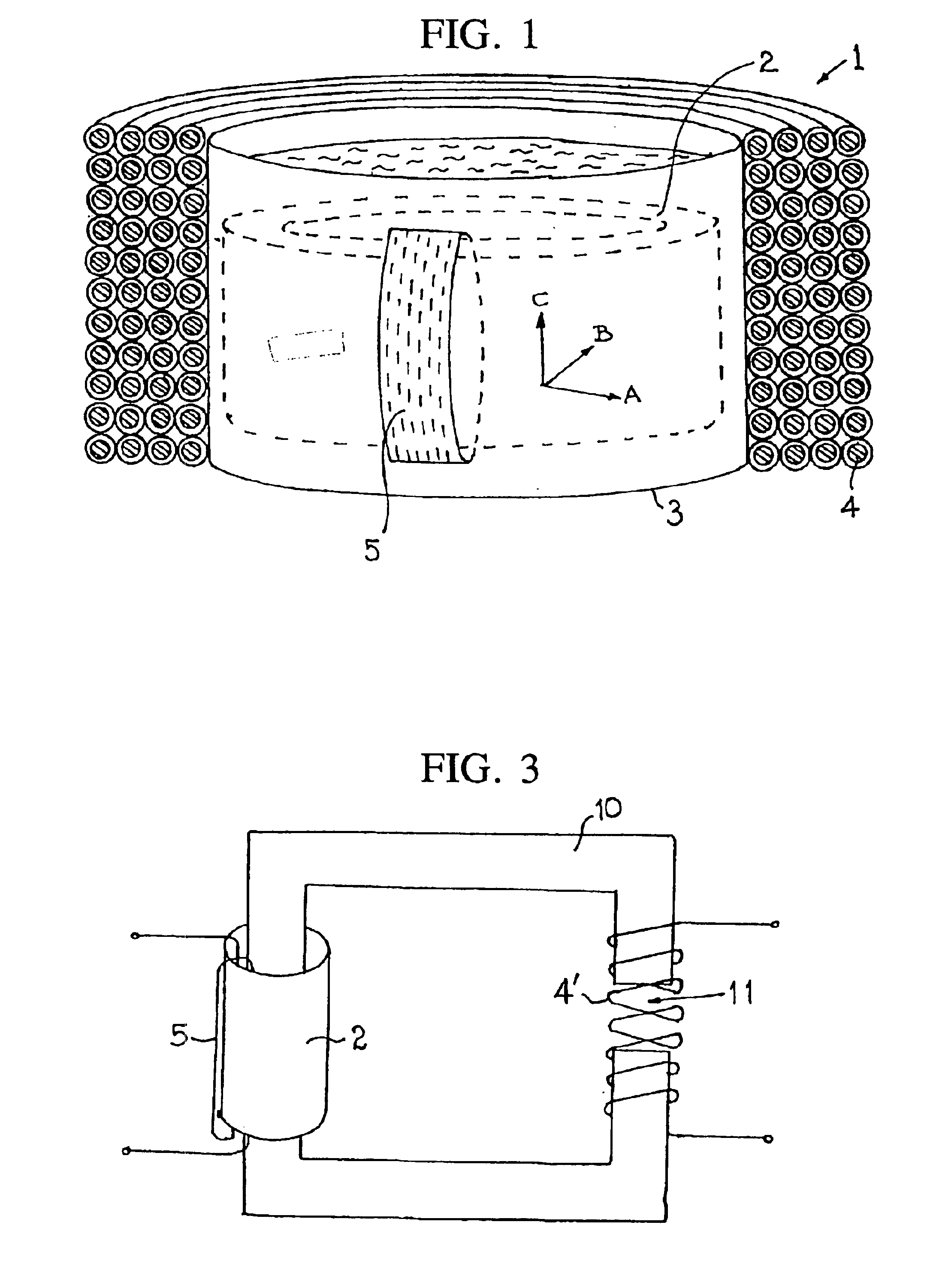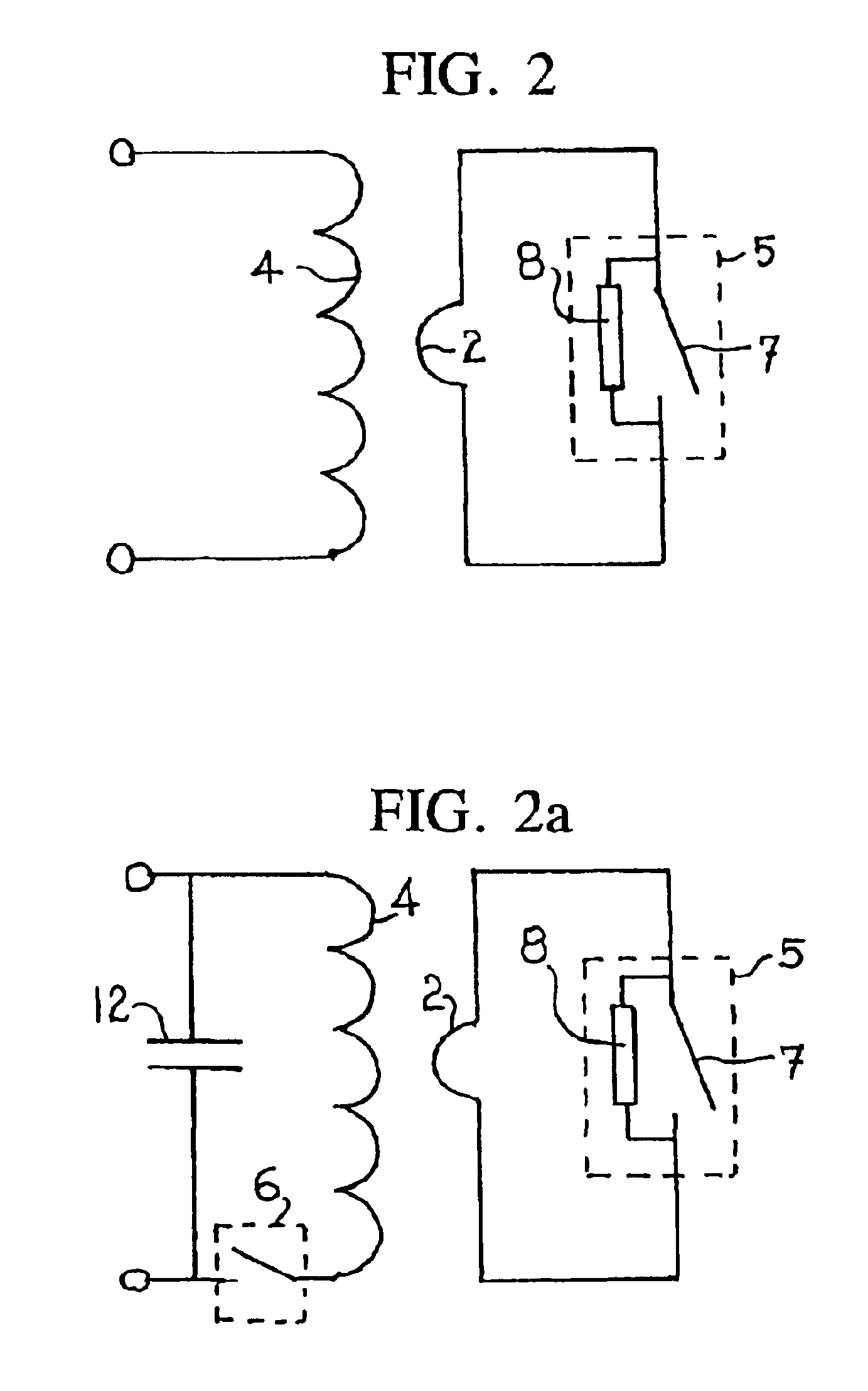Magnetic energy storage device
a magnetic energy storage and magnetic technology, applied in the direction of superconducting magnets/coils, magnetic bodies, instruments, etc., can solve the problems of one feed-through current-carrying lead, small loss, and long storage tim
- Summary
- Abstract
- Description
- Claims
- Application Information
AI Technical Summary
Benefits of technology
Problems solved by technology
Method used
Image
Examples
Embodiment Construction
[0028]FIG. 1 shows one embodiment of a SMES according to the invention and generally designated by the reference numeral 1. The SMES 1 comprises a one turn first coil in the form of a cylinder 2 and made of superconducting material, such as YBCO having a Tc=92 K. The cylinder 2 forms a closed electric circuit and has no mechanical or physical connections connected thereto for supplying energy to or extracting energy from the coil. The cylinder 2 is cooled to superconducting temperatures by cryogenic cooling means. In the embodiment shown, the cylinder 2 is received in a container 3, e.g. a conventional dewar, containing liquid nitrogen at a temperature of 77 K. Alternatively a suitable enclosure means for containment and circulation of helium (or other coolant) in a gas, liquid or gas / liquid mixture may be used. Cooling down to between 40 K and 20 K or less in this manner provides a higher magnetic flux density in high temperature superconductors such as YBCO or BSCCO.
[0029]A second...
PUM
 Login to View More
Login to View More Abstract
Description
Claims
Application Information
 Login to View More
Login to View More - R&D
- Intellectual Property
- Life Sciences
- Materials
- Tech Scout
- Unparalleled Data Quality
- Higher Quality Content
- 60% Fewer Hallucinations
Browse by: Latest US Patents, China's latest patents, Technical Efficacy Thesaurus, Application Domain, Technology Topic, Popular Technical Reports.
© 2025 PatSnap. All rights reserved.Legal|Privacy policy|Modern Slavery Act Transparency Statement|Sitemap|About US| Contact US: help@patsnap.com



